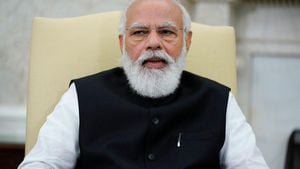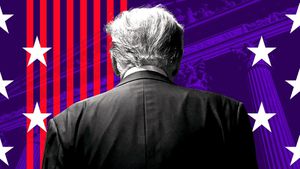How do we decide between two enticing options? Whether it’s choosing which snack to buy or deciding between two job offers, our decisions are often shaped by a myriad of factors that contribute to how we evaluate different choices. A recent study offers intriguing insights into this question, revealing a complex interaction between our gaze, memory, and the decision-making process.
The research conducted by Demetrio Ferro and colleagues, published in Nature Communications, explores how visual attention and the subsequent gaze at empty spaces influence economic choices. The findings suggest that even when options are no longer visible, simply looking at where they used to be can activate our memory of their values and impact our decisions. This eye movement, termed ‘look-at-nothing,’ serves as an unexpected yet significant cue in the reevaluation of potential choices.
Understanding how gaze affects decision-making is vital in various fields such as marketing, behavioral economics, and neuroscience. Eye movements can provide a window into the cognitive processes at play during decision-making, highlighting the potential for gaze to influence outcomes in ways we might not consciously recognize. The authors state, “Our results suggest that look-at-nothing gazing triggers the reactivation of a previously seen offer for further evaluation.”
Insights from this study build upon decades of research into how visual attention is intertwined with cognitive processes. Traditionally, decision-making models focused on how individuals consider options, often underestimating the role of factors such as gaze duration and spatial attention. Previous studies have shown a connection between eye movements and choice, indicating that the duration of gaze on specific options correlates with the likelihood of selection. However, the research conducted by Ferro et al. dives deeper, revealing that our choices are also affected by where we choose to look, even when no offers are present.
At the heart of the study was an innovative approach to analyzing decision-making. The team trained two male macaques on a value-based decision-making task, presenting two risky offers in sequence. After viewing each offer, the subjects faced a brief delay during which the offers were no longer visible. Remarkably, during these wait times, the monkeys often gazed at the empty spaces previously occupied by the offers, and the duration of these fixations seemed to correlate with their eventual choices.
The findings are significant: gaze patterns during this delay period were predictive of the choices made later. This phenomenon emphasizes how our cognitive process extends beyond immediate visuals and incorporates memory and anticipation during decision-making sequences. The researchers noted that longer fixations on the empty spaces increased the likelihood of selecting the offer associated with that location.
The study employed sophisticated techniques to analyze neural activity in the orbitofrontal cortex (OFC), a brain region known to play a vital role in evaluating economic value. By recording the spiking activity of individual neurons, the researchers assessed how gaze influenced the neural encoding of value during and after the presentation of offers. They discovered an intriguing connection: fixating on an empty area where an offer had previously appeared could reactivate that offer's associated value within the neural circuitry of the OFC.
To add clarity to the methodology, the researchers outlined their experimental design, which mirrors a common decision-making scenario faced by humans. In human contexts, consider a scenario where you are choosing between two delicious desserts at a restaurant. You might focus your gaze on a chocolate cake, then on a cheesecake, and ultimately, even after the dessert menus are set down, your lingering gaze at the chocolate cake might still influence your final choice. This tendency shows how our attentional focus has both immediate and lasting impacts on our decisions.
Statistical analyses revealed that gaze behavior significantly predicted choices, regardless of the offers’ expected values or risk. Ferro and his team meticulously examined the data, which demonstrated that even after the visible stimuli were gone, the neural mechanisms tied to visual attention continued to influence valuation and choice. They uncovered a more intricate relationship between gaze and decision-making, indicating a powerful feedback loop in which gaze direction influences, and potentially alters, economic choices.
This important avenue of research highlights a newly understood dimension of cognitive processes. It provides tangible implications across diverse fields. For example, in marketing, advertisers could enhance the effectiveness of campaigns by understanding how visual placements and consumer gaze can impact decisions. In clinical settings, insights from gaze patterns might help identify decision-making impairments in individuals with neurological conditions.
Moreover, the neurophysiological aspect of the study demonstrates the potential benefits of using animal models to explore fundamental cognitive processes. By establishing strong parallels between monkey and human decision-making trays, the findings reinforce the relevance of basic neuroscience principles to broader understanding of economic choice, memory, and attention.
However, researchers are aware of the limitations intrinsic to their study. Gaze patterns can vary widely due to individual differences in cognition, environmental factors, and even moment-to-moment changes in attention. In addition, future studies will need to explore how different contexts—such as the types of decisions being made and the emotional states of decision-makers—might further inform understanding of gaze in decision processes. The authors note, “Although we cannot argue in favor of a causal interplay between gaze and reevaluation or choice, our results suggest that gaze-dependent reactivation might be an integral part of the reevaluation of offers.”
As science continues to untangle the complexities of decision-making, this research paves the way for future studies exploring how cognitive, emotional, and neural dynamics interact in our everyday choices. Moving forward, investigators will likely deploy new technologies, such as more advanced eye-tracking methods combined with other neuroimaging techniques, to gather deeper insights. They may also examine a broader range of choices, contexts, and species to enhance understanding of cognitive processes.
Ultimately, as we gain clarity in how our gaze shapes decision-making, we can misinterpret how thoroughly our choices are influenced by something as seemingly simple as where we look. This research encourages a greater appreciation of the power of eye movements in our lives, illuminating the hidden layers of cognition that govern our choices daily.
In conclusion, the interrelationship between gaze, memory, and choice represents a fascinating frontier in the field of cognitive neuroscience. It invites us to reconsider our own decision-making processes and recognize the subtle ways in which our eyes guide our choices, often without us even realizing it—truly, a window into the workings of our minds.



